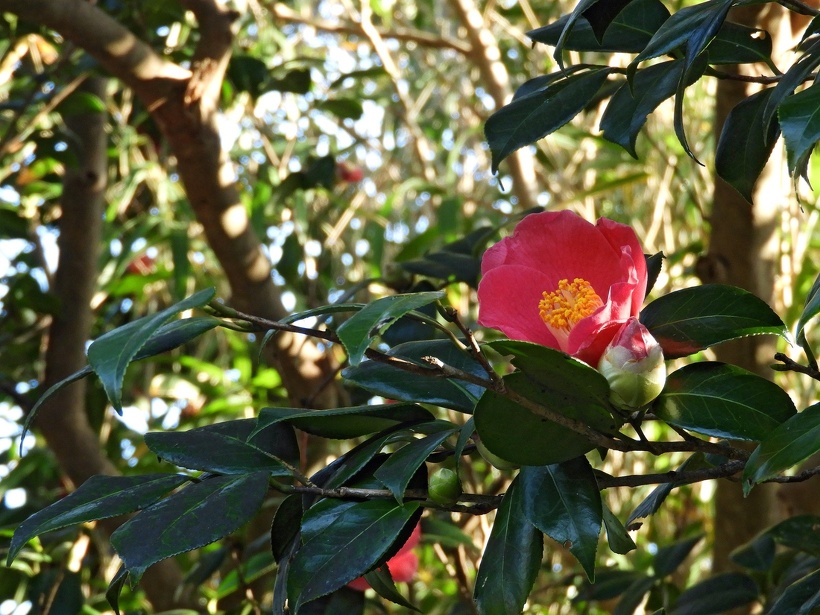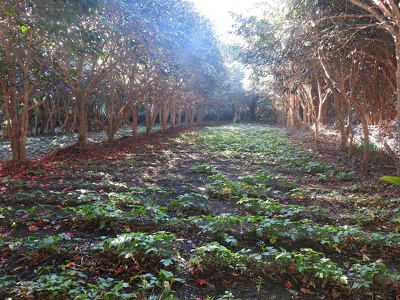Camellia Japonica
| Area |
|---|

The warm and rainy climate and the well-drained ground covered with volcanic ash and scoriae are ideal for camellia growth, and it is estimated that about 3 million camellias grow wild on the island.
Fossils of camellia impressions have been found in the strata of the Remains of Shimotakabora, which date back to the Jomon period, indicating that camellias have been growing naturally on the island since that time.
The camellias, with their strong, supple trunks and branches and thick, evergreen leaves, made good windbreaks and were planted in large numbers around the island to protect houses and fields from the strong seasonal winds. The camellias were planted in large numbers to protect the houses and fields from the strong monsoon winds that were typical of the island, and the thick branches were used for firewood and charcoal, and the camellia seeds were processed into oil.


